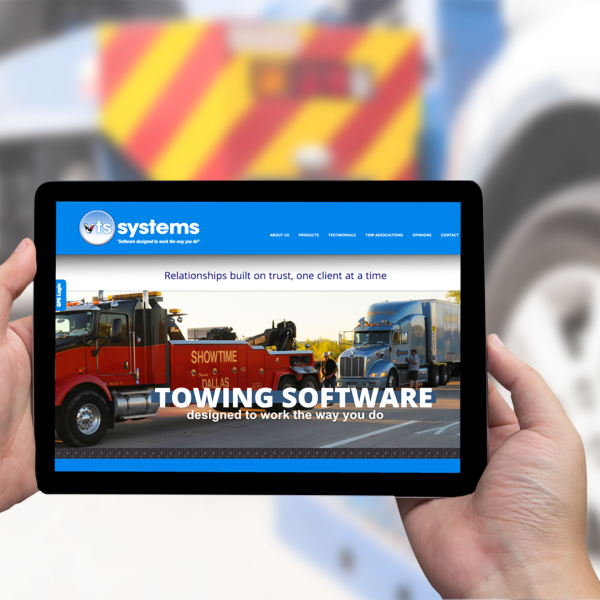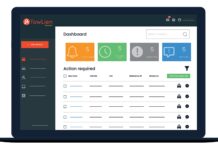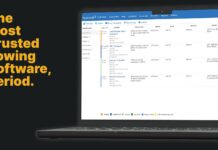
The current COVID-19 pandemic has changed maybe forever, the world in which we live, and many are struggling to accommodate the challenges not only to survive, but to prosper. People are afraid, and fear of the unknown creates uncertainty and in many cases depression. None of this is good for the country, individual employee, nor for the company for whom they work. One solution is to take control, stay focused, stay positive, and stay energized!
Positive energized individuals and companies are turning to technology to solve problems, increase productivity, hopefully allowing them to do more with less. With many of our schools still closed due to the pandemic, parents often need to stay home and manage not only the task of earning a living, but the education of the children. Remote learning and remote business technology have become the norm.
I recently completed a survey on what features the average towing and VSF company needs to remain successful. Obviously, carefully structured, the intent of the questionnaire was to obtain answers indicating future preferences or needs of tow industry software. One observation became very clear, the future of tow industry software is CLOUD-based, moreover, VTS Systems CLOUD software and services must continue to offer feature-rich and cost-effective products. This caused my team to reflect on the product and services that VTS Systems offers and define operational needs versus wants. From the moment your company answers a call requesting service, collecting, and entering data defines client satisfaction, efficiency, and profitability of the work ahead.
In some states or provinces, the regulator considers towing and vehicle impoundment storage as two separate businesses, each with its own structure and rules. However, towing a damaged vehicle inevitably leads to its impoundment where standard operating procedure must ensure security of the property and the required process for its eventual release.
Before anything happens, the call taker must identify the need. Here efficiently designed software should structure the flow of information and effectively define your company’s standard operating procedure (SOP). First the answering greeting, identify your company, and then ask in a calm, clear voice, who is calling, here calls for service fall into two categories, consent and nonconsent tows. In efficiently designed software there should be no typing at this time, only a mouse point and click. Consent tows also fall into two categories, known commercial accounts and cash calls, again point and click, only cash calls may require some typing.
If it’s a nonconsent tow these also fall into two categories private property or law enforcement, incident management tows. Apart from the cash call, known customers calls should require no typing, only a mouse click in a drop-down menu to auto insert known data. It should take 15-30 seconds or less to identify a customer, obtain and type an incident or location address. To maximize the efficiency of the software it is important that information gathering flows left to right across a single viewing page, you should not have to jump from page to page and back to enter data. Such a software design structure is inefficient and increases the opportunity of errors and operator fatigue and frustration.
I referenced earlier needs versus wants, towing is by its very nature a relatively simple business. Following a call for service, (need) you identify an incident location, select the correct type and weight restriction of tow truck, and proceed to the scene, load the incapacitated vehicle, and deliver it to a predetermined destination, unload the vehicle and in most instances the work is done. I described towing as relatively simple, and it is, or it should be. Adding complexity, adds cost.
 But what about the paperwork? With most CLOUD based systems, the need for paper tow tickets has all but disappeared. Even with one-off cash call customers, instead of paper tow tickets your truck operator will obtain an email address or a cell phone number at the tow scene, and with the click of a button on his/her smart phone or tablet, the CLOUD system will send an electronic tow ticket/invoice to the address or cell number provided. In addition, this process may also collect payment from the cash call customers credit/debit card. Every month we see the introduction of new features; some of these new features cater to real needs and some are just wants. Many of these wants, often described as “bling,” are nice to have but not necessary and don’t positively add to the bottom line. However, we should always remember that one man’s “bling,” is another man’s necessity.
But what about the paperwork? With most CLOUD based systems, the need for paper tow tickets has all but disappeared. Even with one-off cash call customers, instead of paper tow tickets your truck operator will obtain an email address or a cell phone number at the tow scene, and with the click of a button on his/her smart phone or tablet, the CLOUD system will send an electronic tow ticket/invoice to the address or cell number provided. In addition, this process may also collect payment from the cash call customers credit/debit card. Every month we see the introduction of new features; some of these new features cater to real needs and some are just wants. Many of these wants, often described as “bling,” are nice to have but not necessary and don’t positively add to the bottom line. However, we should always remember that one man’s “bling,” is another man’s necessity.
Now let’s discuss storage lot management, without doubt software and especially CLOUD based software has and will continue to transform the management of vehicle storage facilities, known simply as VSF’s. VTS Systems is known throughout the US and Canada for its storage lot software, especially in the State of Texas, which is the most regulated state in the union when it comes to managing vehicle storage facilities. The secret of successfully managing a VSF and remaining in compliance with state or local regulators is SOP! From the moment a vehicle enters the storage facility, effective storage lot software should dictate a timeline of events, what needs to happen, and when. It is important that employees understand their job function and how the software is there to assist them, not replace them. Your VSF operator should watch for illuminated screen icons and perform timely mouse clicks for your company to remain in compliance. Be it fully integrated access to multistate MVR’s to obtain registered owner and lien holder information, the automated creation and processing of certified mail notifications/lien letters and the other required steps through to the claiming of the vehicle or ultimately sold at a public sale or auction.
Well-designed software will instill a process into your organization, a standard operating procedure (SOP). Most successful companies already have a process and the software SOP will only increase your company’s efficiency. Back in the day when everything was manual, often pen and paper, each employee was responsible for their actions and the good of the company. As software began to relieve the repetitive nature of work, employees learned new skills, how to operate a computer and manage the software programs within, increasing the overall efficiency of the company. VTS Systems has a five-year technology roadmap designed to increase the efficiency and features of the process. Our only business is towing and vehicle storage management software. “Nobody does storage lot management like we do.” Period!
Is there a downside to the invasion of technology into our lives? Could it be there are too many distractions in our lives which also invade the workplace? The answer is yes! We as individuals must take control of what we do and when. There are constant distractions trying to take control of our time: Facebook, social media, and text messaging invading our working hours not to mention phone calls and the business of business. The solution is to hire good people, take control, stay focused, stay positive, and stay energized!









